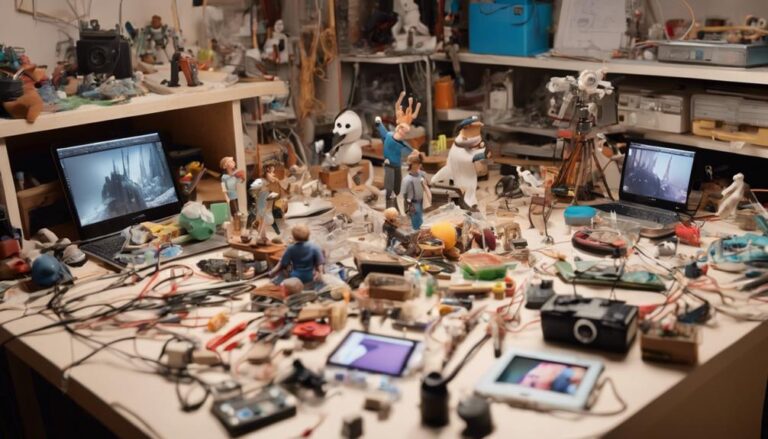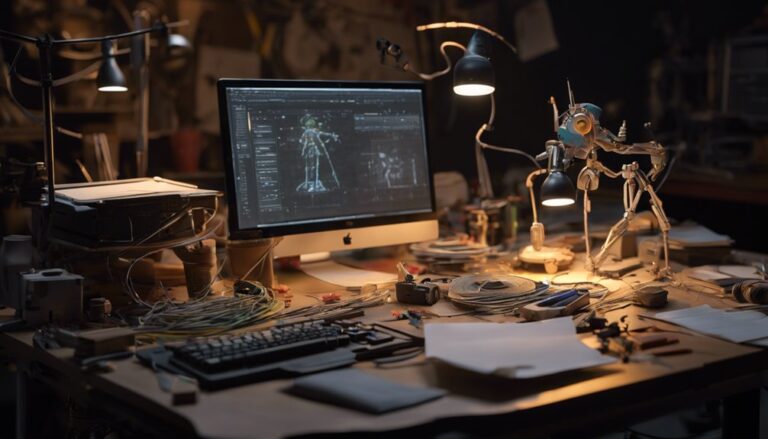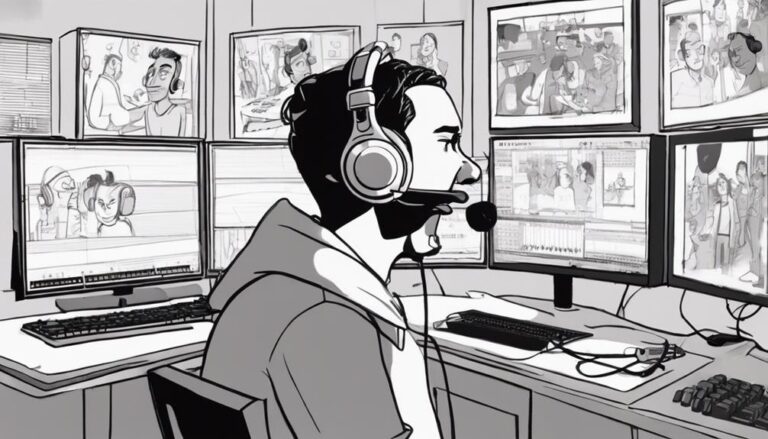Why Follow a Standard Animation Production Pipeline?
By following a standard animation production pipeline, you'll improve project management through effective schedule control, task delegation, and resource allocation. This streamlined approach also enhances collaboration efficiency by establishing a common language and framework among team members. As a result, you'll reduce production costs, better manage time, and achieve higher quality outputs that meet your artistic vision and technical requirements. By implementing a standard pipeline, you'll set your animation projects up for success and be able to deliver them on time, within budget, and to the desired quality – but there's more to explore about how this works.
Key Takeaways
- A standard animation production pipeline enables effective project management and streamlined collaboration.
- Implementing a standard pipeline reduces production costs through optimized budgets and minimized waste.
- A standard pipeline facilitates better time management by creating a clear schedule and prioritizing tasks.
- Following a standard pipeline yields higher quality outputs through a structured approach and quality control measures.
- A standard pipeline enhances collaboration efficiency by establishing a common language and framework for all team members.
Improved Project Management
Effective project management is the backbone of a streamlined animation production pipeline.
As you oversee your project, you'll want to establish a solid foundation for managing tasks, timelines, and resources.
This is where schedule control comes in – a crucial aspect of project management that enables you to track progress, identify bottlenecks, and adjust your plan accordingly.
To maintain schedule control, you'll need to delegate tasks effectively.
This involves identifying the strengths and weaknesses of your team members and assigning tasks that play to their skills.
By doing so, you'll ensure that each task is completed efficiently and to a high standard.
Task delegation also helps to prevent overloading team members with too much work, reducing the risk of burnout and errors.
A well-structured project management framework will enable you to allocate resources effectively, prioritize tasks, and monitor progress in real-time.
By maintaining schedule control and delegating tasks effectively, you'll be able to deliver your animation project on time, within budget, and to the desired quality.
This, in turn, will help to build trust with your clients and establish your reputation as a reliable and efficient animation studio.
Enhanced Collaboration Efficiency
To elevate your animation production pipeline, consider the importance of streamlined collaboration.
When working on complex animation projects, it's crucial that all team members are on the same page. A standard animation production pipeline enables clear communication among team members, stakeholders, and clients.
This ensures that everyone involved has a unified vision of the project's goals, timelines, and expectations.
A standardized pipeline facilitates collaboration by establishing a common language and framework for all team members.
This allows you to break down complex tasks into manageable chunks, assign responsibilities, and track progress.
With a clear understanding of each team member's role and responsibilities, you can avoid misunderstandings, reduce errors, and increase overall efficiency.
Reduced Production Costs
By implementing a standard animation production pipeline, you're able to minimize unnecessary expenses and optimize your budget, resulting in reduced production costs.
This is achieved through cost savings in several areas, including asset management, workflow efficiency, and reduced waste. A standard pipeline ensures that all team members are working with the same assets, reducing duplication of effort and minimizing the need for costly revisions.
Budget optimization is also a key benefit of a standard pipeline. By breaking down the production process into manageable stages, you can allocate resources more effectively and identify areas where costs can be reduced.
This allows you to create a more accurate budget and stick to it, reducing the risk of costly overruns. A standard pipeline also enables you to track costs in real-time, making it easier to identify areas where savings can be made.
Better Time Management
Implementing a standard animation production pipeline doesn't just help you save money; it also enables you to manage your time more efficiently.
By establishing clear processes and guidelines, you can streamline your team's workflow, reducing confusion and miscommunication that can lead to costly delays.
With a standard pipeline, you can create a schedule that accurately reflects the time required for each task, allowing you to allocate resources effectively and prioritize tasks accordingly.
Task prioritization is also crucial in effective time management.
A standard pipeline helps you identify the most critical tasks and allocate the necessary time and resources to complete them.
This ensures that you meet deadlines and deliver high-quality outputs within the allotted timeframe.
By prioritizing tasks, you can also minimize downtime and maximize productivity, as team members know exactly what to work on and when.
A well-structured pipeline also helps you track progress, identify bottlenecks, and make adjustments as needed, ensuring that your team stays on track and meets project deadlines.
Higher Quality Outputs
Consistently, a standard animation production pipeline yields higher quality outputs due to its structured approach.
This approach enables you to maintain a clear artistic vision throughout the production process, from pre-production to post-production. By defining your project's scope, goals, and deliverables early on, you can ensure that all team members are aligned with your vision and work towards a common objective.
A standard pipeline also ensures technical precision by breaking down complex tasks into manageable steps.
This allows you to focus on specific aspects of the production, such as modeling, texturing, and lighting, without compromising on quality. By following established protocols and guidelines, you can minimize errors and inconsistencies, resulting in a more polished and refined final product.
Furthermore, a standard pipeline enables you to implement quality control measures at various stages of production, ensuring that any issues are identified and addressed promptly.
This proactive approach helps you deliver high-quality outputs that meet your artistic vision and technical requirements, while also meeting the expectations of your clients or audience.
Conclusion
By following a standard animation production pipeline, you'll experience improved project management, enhanced collaboration efficiency, reduced production costs, better time management, and higher quality outputs. This structured approach enables you to streamline workflows, allocate resources effectively, and minimize errors. As a result, you'll deliver projects on time, within budget, and to the desired quality. This, in turn, boosts your reputation, increases client satisfaction, and drives business growth in the competitive animation industry.







